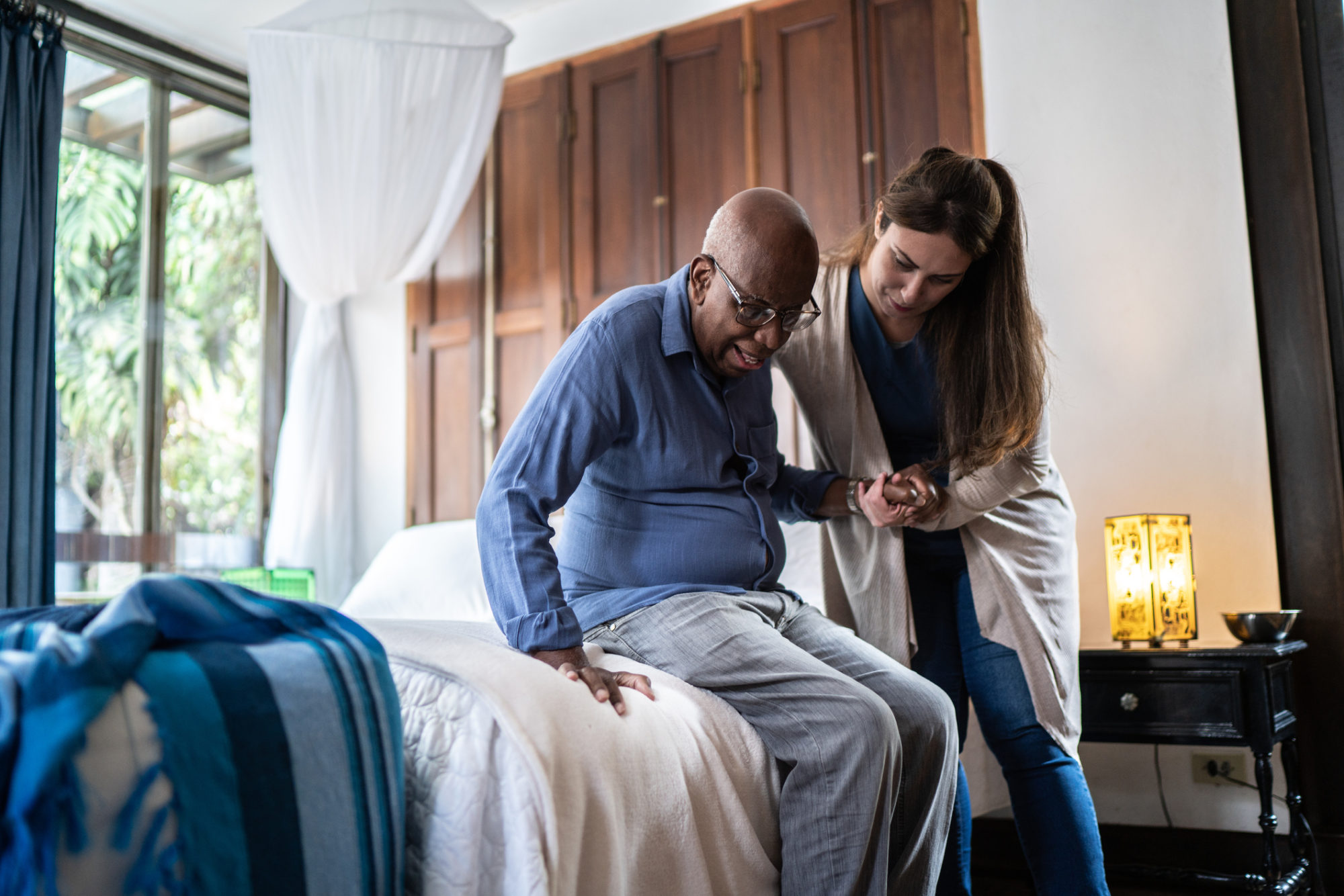July 21, 2022

In Illinois there are about 260 home nursing agencies, but more than 900 home service agencies. Consumers need to be aware of the difference when they make choices.
“I don’t want to put my mom in a nursing home. I want to figure out how to take care of her at home.” More and more, seniors and their families are saying they want to continue living at home while receiving care for chronic conditions.
The demand for in-home clinical (medical/nursing) care—as opposed to non-medical services such as cleaning and cooking—is growing for several reasons. Those include the often-prohibitive cost of nursing homes or assisted living and fallout from the COVID pandemic, which left many with seniors with the negative effects of being isolated in those settings.
Once family members have made a commitment to providing care for a loved one at home, they face another challenge: “The system we currently have hasn’t caught up with the demand,” explains Sheila McMackin, founder of Wellspring Personal Care. More people need nurse-managed care in the home, rather than just non-medical services.
Not all home care is medically supervised
Sheila explains that until recently, home care in the U.S. was traditionally managed by nurses. “It’s only in the last 20 years that non-medical home care—not directed by nurses—has flourished,” she says. “In fact, in Illinois today, we have over 900 home service agencies vs. about 260 agencies that provide in-home nursing.” (Wellspring Personal Care offers both.)
Non-medical home care is critical to keeping people safe and at home. It’s an important part of the continuum of care that Wellspring provides. But what’s become even more important is the need for nursing oversight in the home. Even people with higher acuity levels—more complicated medical and nursing needs—want to avoid nursing homes and instead age in place. Unfortunately, there are not enough agencies that offer nurses and CNAs who can deliver that level of care.
Sheila provides an example of this need. Earlier this summer Wellspring got a call from a woman in Florida whose father in Illinois had two excellent caregivers. But he had been experiencing discomfort and fevers. The caregivers, not being CNAs or nurses, didn’t have the experience or knowledge to recognize the man was showing signs of delirium. Eventually he was hospitalized for three weeks with a urinary tract infection—the cause of his delirium.
“The consuming public is beginning to realize that some older adults who want to remain at home have medical needs that require a CNA who is supervised by a nurse,” says Sheila. “The CNA is the eyes and ears, the observer. They notify the nurse, who uses their clinical judgement and skills to interpret this information and decide what to do.”
What consumers should know
“Consumers need to know that there are agencies, like Wellspring, that use nursing supervision as part of the service they deliver,” says Sheila. “The nurse will go into the home, meet with the individual, and set up a care plan. There are agencies that do not do that, so if the family feels they need a nurse supervising the care, then they need to ask each agency they talk to whether they offer that.”
“And it’s not just the specifically medical knowledge a nurse/CNA team has,” she adds. For example, if the senior living at home has compromised mobility, they are likely a fall risk. In that case it would be important to hire a caregiver who is trained in fall risks and who works with a nurse supervisor who guides them in managing it.
Clinical care in the home is comparable in price to non-medical care like companionship, cooking and cleaning. What’s more, it will ensure that clients receive the medical attention their condition requires—and can continue living at home.
